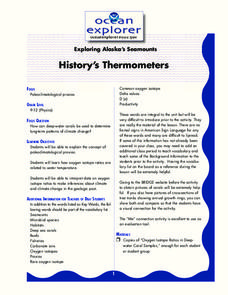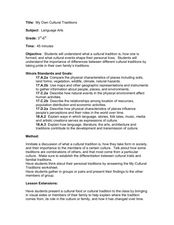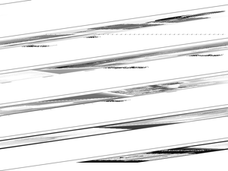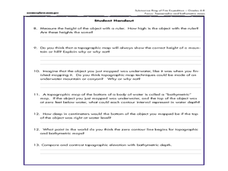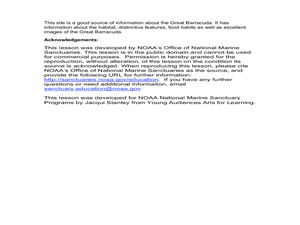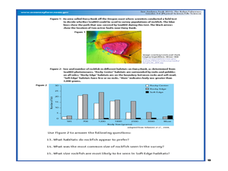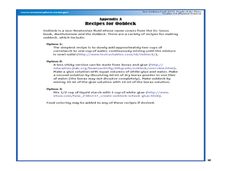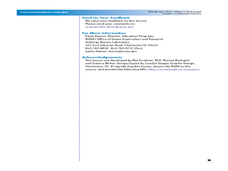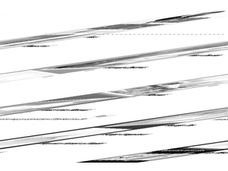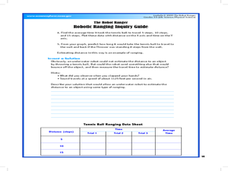Curated OER
Properties of Water with a Splash of Color
Students explore the properties of water. In this cross curriculum art and physical science lesson plan, students experiment with a variety of materials to demonstrate the cohesive forces and adhesion of water. Students create a water...
Curated OER
Flight Dreams - The Pressure on Parachutes
Students investigate air pressure by researching parachutes. In this physics lesson plan, students participate in three separate experiments utilizing air pressure and paper products to test theories on parachutes. Students...
Curated OER
Teeshirt Printing
Students become responsible and involved citizens. In this t-shirt printing lesson plan students design and create a teeshirt with a message about citizenship and responsibility. Natural objects are used as stamps.
Curated OER
History's Thermometers
High schoolers explain the concept of paleoclimatological proxies. In this oxygen isotope lesson, students interpret data and make inferences about climate changes in the geologic past.
Curated OER
My Own Cultural Traditions
Students complete a worksheet on personal traditions. In this cultural traditions lesson, students discuss what a cultural tradition is and why they are important to the members of the culture. Students distinguish between cultural...
Curated OER
Sonar Simulation
Students compare and contrast side-scan sonar to other methods used to find objects underwater. In this underwater search instructional activity, students describe side-scan sonar and make inferences about the topography of an unknown...
Curated OER
Reduced Fare
Students discover the relationship between tectonic plate boundaries and the communities of life that thrive at such boundaries. In this biology lesson plan, students find that methane from oxidized carbon in sediments provides nutrients...
Curated OER
A Watered-Down Topographic Map
Eighth graders explore the ocean floor. In this topography instructional activity, 8th graders compare topographical maps to bathymetric charts. They will create a topographic map and note landmarks and other land features.
Curated OER
The Great Barracuda
Students explore oceanography by researching the great barracuda. In this animal life lesson, students read several vocabulary terms dealing with ocean life and examine a drawing of a barracuda. Students examine the many...
Curated OER
Staghorn Coral
Young scholars recognize that staghorn coral helps reef growth in the Caribbean. In this Coral Reef lesson, students design a habitat model using various art materials to explain how staghorn coral helps the reef grow. Young...
Curated OER
What Do Halloween Costumes Say?
Students analyze Halloween costumes they find in magazines to categorize their findings. In this holiday lesson plan, students discuss their findings about the costumes based on four different elements.
Curated OER
Symmetry in Paper Airplanes
Students explore symmetry. In this geometry and scientific inquiry lesson, students design paper airplanes with middle line symmetry, as well as right, obtuse, and acute angles. Students measure the plane's angles using a...
Curated OER
Journey to the Unknown
Students explore the ocean depths. In this scenario based lesson, students pretend they are on a submarine in an unknown part of the ocean. By using clues the class discusses and determines where they are in the ocean. They follow up...
Curated OER
How Far Did They Go?
Students create a map. In this direction and distance lesson, students come up with familiar places in the community and calculate the distances from these places to the school. Students create a map that displays these places and their...
Curated OER
Life on the Hardbottom
Students find similarities and differences between a biotrope habitat and an ecosystem. In this hardbottom biotrope lesson, students research and respond to inquiry questions about a biotrope. Students identify three...
Curated OER
What's the Connection?
Learners explain hardground communities in the Gulf of Mexico. In this deep-sea ecosystem instructional activity, students investigate the connection between deep-sea ecosystems and petroleum deposits. They discuss the relationship...
Curated OER
The Robot Fisherman
Students examine the use of robotic vehicles for fish surveys. In this ocean life instructional activity, students discuss the advantages and disadvantages of using underwater robots and the requirements an underwater robot must meet in...
Curated OER
Puzzle of the Plates
Students research tectonic plates and their movement. In this plate lesson plan, students describe the motion of these plates and the boundaries between them. They look into the San Andreas Fault and explore the earthquakes associated to...
Curated OER
Where's the Energy
Students research energy conversions. In this energy lesson plan, students describe the basic operation of a steam engine. They explain the energy conversions in the steam engine's operation.
Curated OER
The Tell-Tale Plume
Students examine hydrothermal vents. In this ocean instructional activity, students identify changes in physical and chemical properties of sea water caused by hydrothermal vents.
Curated OER
Pleistocene Mammals
Students research the causes of the extinction of Pleistocene mammals. In this Pleistocene mammals lesson, students read essays to understand the Pleistocene epoch. Students write an essay about the personal impact of this...
Curated OER
Save Your Breath
Students discuss metabolism. In this metabolism lesson, students evaluate evidence form a research report and discuss the basis for hypothetical metabolic adaptations to low-oxygen environments in the anchialine caves.
Curated OER
Bermuda: Search for Deep Water Caves: Living Fossils
Students explore relict species. In this anchialine cave lesson, students identify relict species associated with anchialine caves, and explain the importance of preserving anchialine caves and species.
Curated OER
The Robot Ranger
Students participate in an experiment to understand how robotic systems can estimate distances. In this robotic ranger lesson, students measure the the time it takes for and object to move back and forth. Students will use a...



